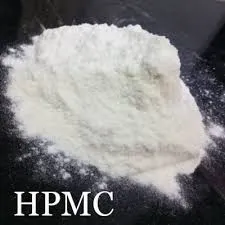
Nov . 30, 2024 08:45 Back to list
Applications and Benefits of Hydroxyethyl Cellulose in Various Industries
Understanding Hydroxyethyl Cellulose Uses and Applications
Hydroxyethyl cellulose (HEC) is a non-ionic, water-soluble polymer derived from cellulose, a natural polymer obtained from the cell walls of plants. HEC is widely used across various industries due to its unique properties such as thickening, emulsifying, and film-forming abilities. This article aims to explore the diverse applications of hydroxyethyl cellulose in different fields.
1. Cosmetics and Personal Care Products
One of the primary applications of hydroxyethyl cellulose is in the cosmetics and personal care industry. HEC acts as a thickening agent in products such as lotions, creams, shampoos, and conditioners. By increasing the viscosity of formulations, it ensures a smooth texture and enhances the spreadability of the products on the skin and hair. Moreover, HEC is known for its film-forming capabilities, which help create a protective barrier on the skin, thus preventing moisture loss. It is also used in makeup products, where it contributes to optimal consistency and stability.
2. Pharmaceuticals
In the pharmaceutical sector, hydroxyethyl cellulose is utilized for various purposes. It is often used as a thickening agent in gels and ointments, providing a desirable texture and stability to the formulations. Additionally, HEC plays a crucial role in controlled-release drug formulations. Its properties facilitate the release of active pharmaceutical ingredients (APIs) over an extended period, enhancing the efficacy of the medication. HEC is also employed as a suspending agent, ensuring uniform distribution of drug particles in liquid formulations.
3. Food Industry
Hydroxyethyl cellulose finds multiple uses in the food industry as well. It serves as a thickening and stabilizing agent in various food products, improving texture and mouthfeel. HEC can be found in products like sauces, dressings, and ice creams, where it helps maintain emulsion stability and enhances viscosity. Given its non-toxic and food-grade nature, HEC is preferred in various applications where safety and quality assurance are paramount.
4. Construction
what is hydroxyethyl cellulose used for

In the construction industry, hydroxyethyl cellulose is used as a thickener and binder in cement-based products. It provides significant improvements in the workability of mortars and plasters, allowing for better adhesion and a smoother finish. HEC also helps in improving water retention, which is essential for ensuring proper hydration of cement during the drying process. This property ultimately leads to enhanced mechanical strength and durability of construction materials.
5. Textile and Paper Industries
Hydroxyethyl cellulose is extensively used in the textile industry as a sizing agent. It aids in improving the strength and quality of fabrics while also assisting in more efficient dyeing processes by ensuring uniform application of dyes and chemicals. In addition, HEC is utilized in coating formulations for paper and board, where it provides a superior finish and enhances printability by improving ink adhesion.
6. Agriculture
In the agricultural field, hydroxyethyl cellulose is used as a coating agent for pesticides and fertilizers. This coating helps regulate the release of active ingredients, ensuring a more controlled application and minimizing environmental impact. HEC provides a means to enhance soil moisture retention, improve seed germination rates, and facilitate better nutrient absorption by plants.
7. Adhesives and Sealants
Hydroxyethyl cellulose is a valuable component in the formulation of adhesives and sealants. Its water retention properties contribute to the performance and curing times of these products, making it easier to apply and ensuring a strong bond upon drying.
Conclusion
In conclusion, hydroxyethyl cellulose is a versatile, eco-friendly polymer with a wide array of applications spanning various industries, including cosmetics, pharmaceuticals, food, construction, textiles, agriculture, and adhesives. Its unique properties, such as thickening, emulsifying, and film-forming, make HEC an essential ingredient in many formulations. As the demand for sustainable and effective materials continues to grow, the relevance of hydroxyethyl cellulose is likely to expand, paving the way for further innovations and applications in the future. Whether you are formulating cosmetics or developing new construction materials, hydroxyethyl cellulose is a compound worth considering for its multifunctional capabilities and contributions to product performance.
-
Versatile Hpmc Uses in Different Industries
NewsJun.19,2025
-
Redispersible Powder's Role in Enhancing Durability of Construction Products
NewsJun.19,2025
-
Hydroxyethyl Cellulose Applications Driving Green Industrial Processes
NewsJun.19,2025
-
Exploring Different Redispersible Polymer Powder
NewsJun.19,2025
-
Choosing the Right Mortar Bonding Agent
NewsJun.19,2025
-
Applications and Significance of China Hpmc in Modern Industries
NewsJun.19,2025







